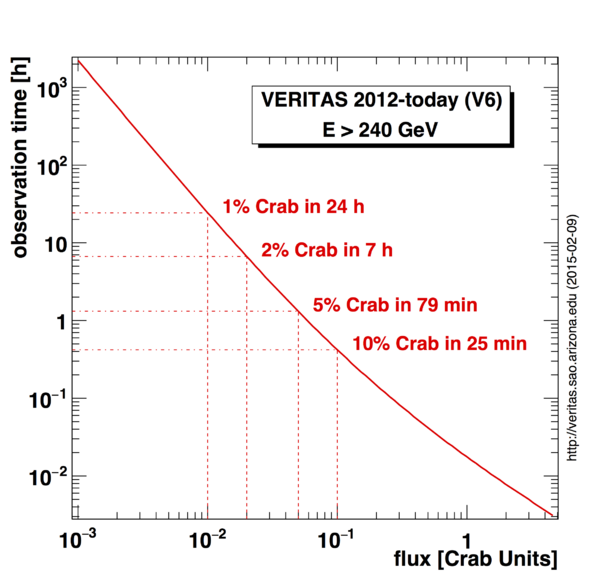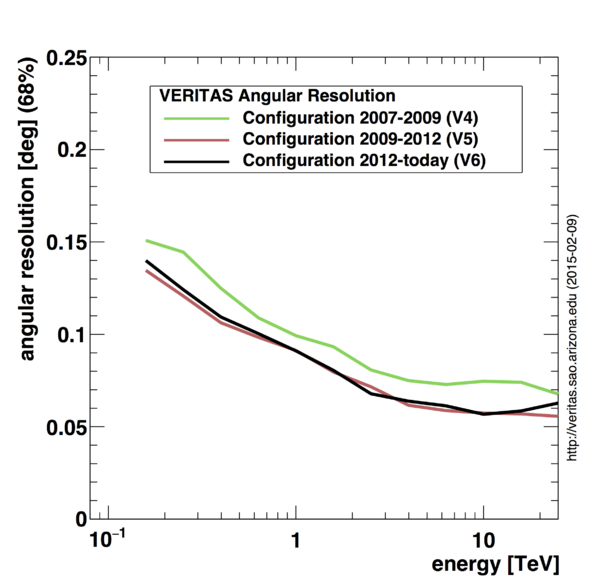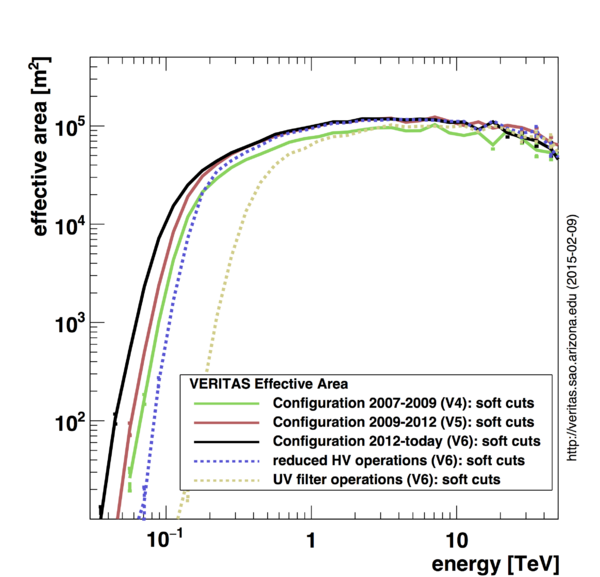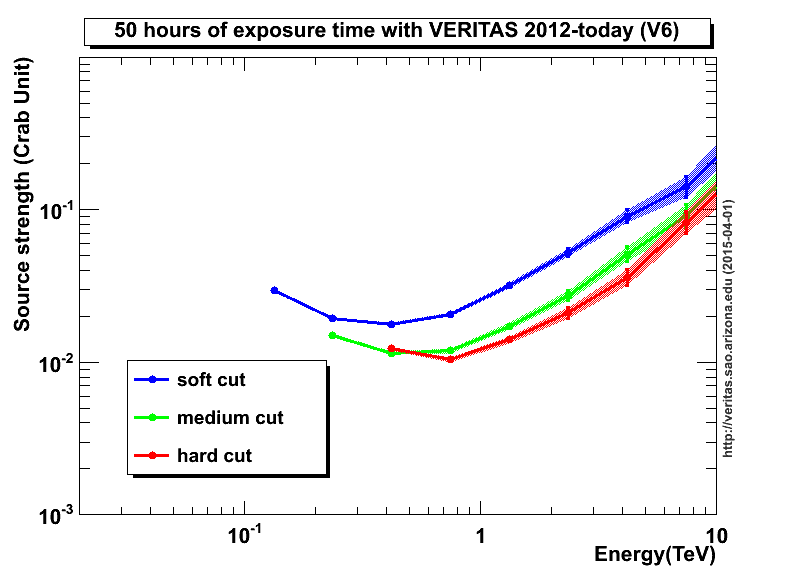This page summarizes the sensitivity and performance of VERITAS. In summer 2009 the array layout was changed; this provided a ~15% improvement in sensitivity, corresponding to a ~25% reduction in the time required to detect a source. In summer 2012, the PMTs on all cameras were upgraded to high-quantum-efficiency PMTs, providing another improvement in sensitivity and a significantly lower energy threshold.
Figures below show performance indicators and sensitivities from all three periods: prior to the array move (V4), the 2009 to 2012 period (V5), and the post-PMT-upgrade period (V6).
Questions can be addressed to our spokesperson or deputy spokesperson.
Key characteristics:
- energy range: 85 GeV to >30 TeV (spectral reconstruction starts at 100 GeV)
- energy resolution: 17% at 1 TeV
- peak effective area: 100,000 m2
- angular resolution: 0.08 deg at 1 TeV, 0.13 deg at 200 GeV (68% containment radius)
- source location accuracy: 50 arcseconds
- point source sensitivity (with new configuration and upgrades as of summer 2012): 1% Crab in < 25h, 10% in 25 min
- observation time per year: ~750 hours non-moonlight, ~200 hours moonlight. Typically 70-100 hours total per month over 10 months.
Critical Information:
- VERITAS observes only under clear, dark skies: Observations are not possible under very cloudy conditions, or when it is raining (see here for local weather conditions). Observations can be made under moonlight, when the moon is less than half full. The observatory shuts down for ~6 days every month around full moon.
- VERITAS does not observe during the summer: Observations are not possible during the summer months of July and August, due to local monsoon conditions.
- VERITAS is located near Tucson, Arizona: at +31° 40' 30.21", -110° 57' 7.77" ; Altitude 1268 m (4159 ft).
- VERITAS works best for sources at high elevation angles: For observations made below 60 deg elevation, Cherenkov telescopes have significantly reduced sensitivity and higher energy threshold. This limits most VERITAS targets to declinations 0 deg to +60 deg; exceptions can be made for particularly interesting targets slightly outside of this region (-10 deg to +70 deg). A useful source visibility tool is available here
- VERITAS sensitivity decreases with source offset from the centre of the field of view.
- Energy threshold is defined as peak in the differential counting rate for a Crab-like source.
Plots after PMT upgrade in summer 2012:
- Observation time vs source strength for a 5 sigma signal or at least 10 events (elevation: 70 deg):

- Angular resolution as a function of gamma-ray energy (elevation: 70 deg):

- Effective area as a function of gamma-ray energy (elevation: 70 deg):

- Differential sensitivity (Differential sensitivities indicate the strength of the source VERITAS can detect with 5 sigma significance in 50 hours of exposure time at elevations above 70 degrees)


